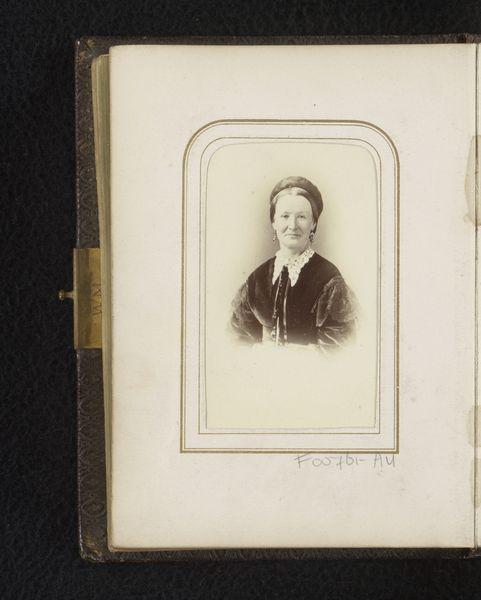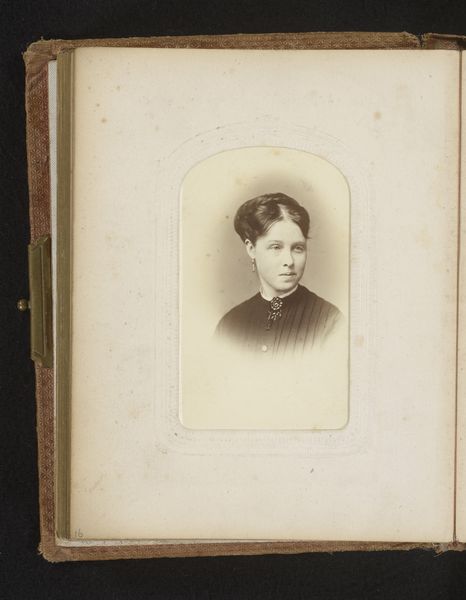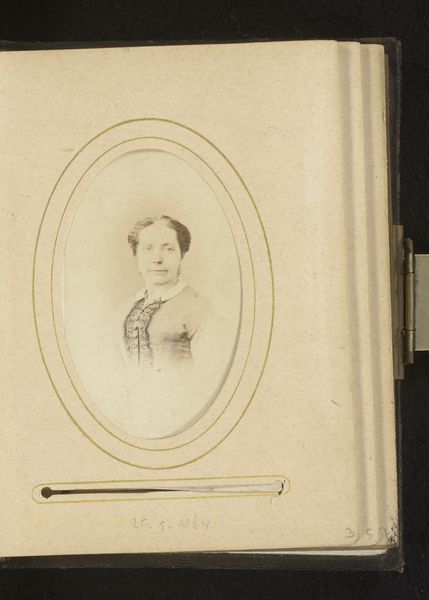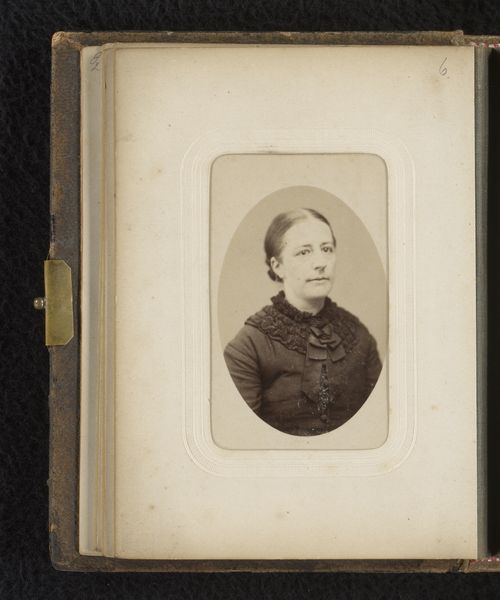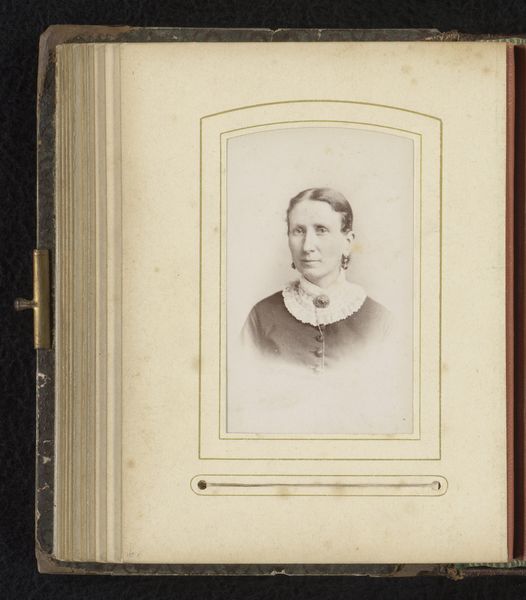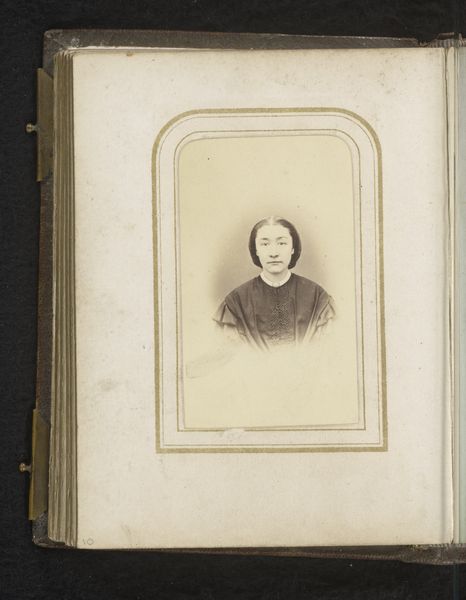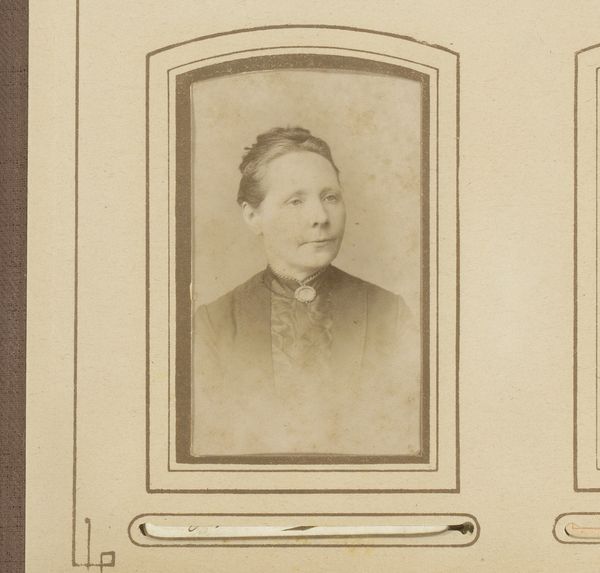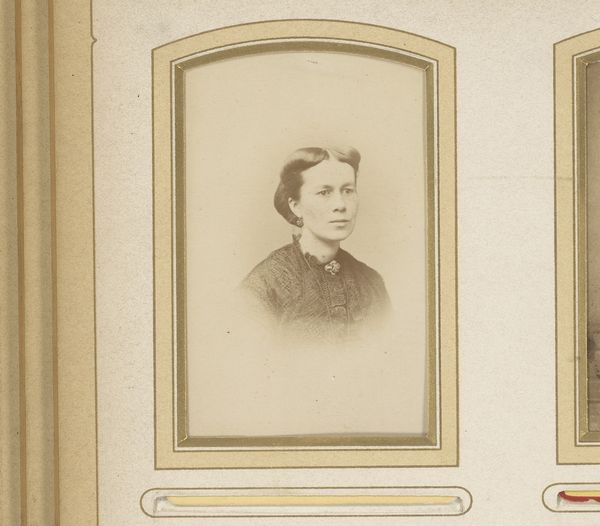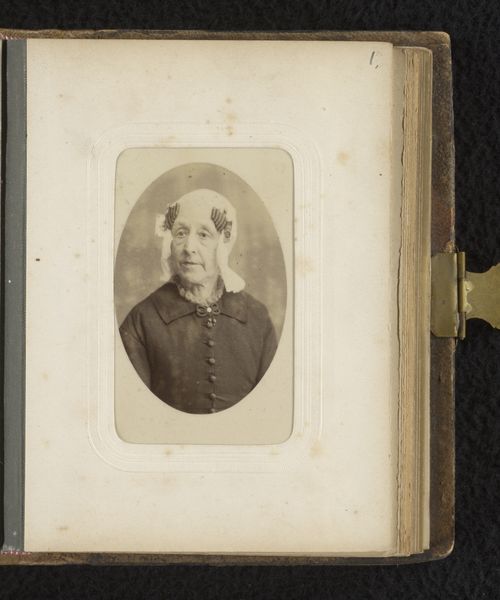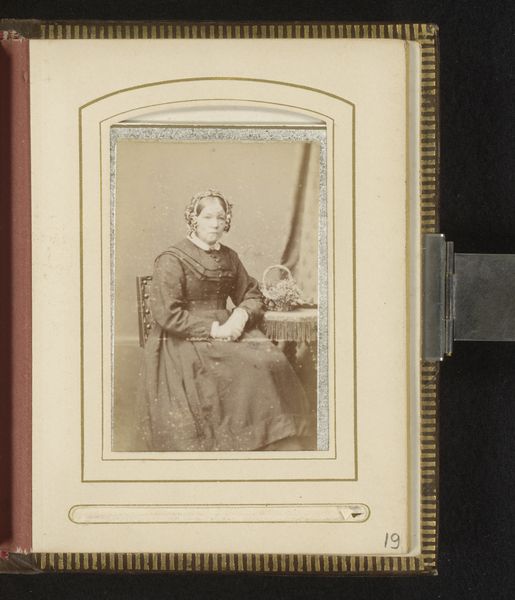
photography, gelatin-silver-print
#
aged paper
#
antique finish
#
toned paper
#
vintage
#
antique
#
photography
#
gelatin-silver-print
Dimensions: height 87 mm, width 51 mm
Copyright: Rijks Museum: Open Domain
Editor: This is "Portret van een jongen," or "Portrait of a Boy," made between 1854 and 1870 by Maull & Co, using gelatin silver print photography. It has a sepia tone that evokes a sense of a bygone era, a sort of timeless gaze into history. What kind of symbols do you see embedded in this portrait? Curator: Indeed. Consider how portraiture in this period, particularly with photography's rise, offered a new kind of memento mori. Before, only the wealthy could afford painted portraits. Photography democratized remembrance. Note the boy's clothes, how carefully he's dressed. This isn’t a snapshot. It is an assertion of social standing and an aspiration for posterity. What feelings does this instill for you? Editor: I think there's an intriguing tension there, between this effort to immortalize oneself and the unavoidable passage of time, given the aging of the photographic materials. Curator: Precisely. The toning you see is itself a signifier. It's a reminder of material decay, yet the image persists. Notice the framed presentation, mimicking paintings of the past, lending respectability to the novel medium of photography. Editor: It feels like photography tried so hard to resemble established mediums like painting to gain cultural cache at the time. But with our perspective, we can see its intrinsic qualities today. Curator: A perceptive point. Each element – the pose, the setting, even the material – contributes to the layered symbolism, revealing societal values of that era and challenging our present-day understanding. Editor: So much information can be gleaned from what seems, at first glance, like a simple portrait. Thank you. Curator: My pleasure, I hope this encourages a further investigation of the cultural memory that images hold.
Comments
No comments
Be the first to comment and join the conversation on the ultimate creative platform.
